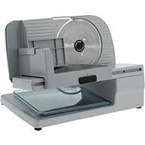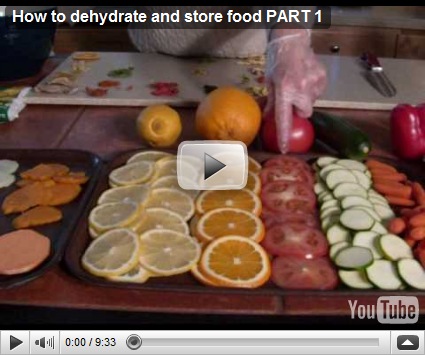The garden harvest at our home is in full swing. Long anticipated fruits and vegetables make every meal a culinary delight.
We’ve always used the produce from our gardens and orchard for home storage but hadn’t included dehydrated foods in our food storage mix – until this year that is.
 After listening to others rave about their dehydrated garden produce, apples, cherries, apricots and pears for years, we closely questioned them about their choice of dehydrator. The responses were enlightening.
After listening to others rave about their dehydrated garden produce, apples, cherries, apricots and pears for years, we closely questioned them about their choice of dehydrator. The responses were enlightening.
In years past, we had a large greenhouse and closed the doors and vents to turn it into a big dehydrator to make cherry, apricot, peach, apple and pear leather. Our kids loved it the stuff. They would invariably choose it over candy.
When we moved, we left our green house behind. It has yet to be replaced. In the interim, we purchased one of the round dehydrators at a discount store and have never been happy with it. Thus, dehydration efforts of any kind fell to the wayside.
The favorable responses to our ‘What dehydrator do you use? and would you recommend it?” question had a common theme.
- Stay away from dehydrators like the round one that we had.
- Stay away from flimsy shelf dehydrators.
- Buy an Excalibur dehydrator and love life.
 This spring, we purchased a 9-shelf Excalibur model 3926T with temperature and timer. We also purchased a food slicer. Now we delight in finding things to dehydrate that we wouldn’t have considered earlier. Our pantry is lined with rows of quart bottles filled with produce from our garden, fruit bushes, products that were on sale and produce items that couldn’t eat quickly enough to keep from spoiling.
This spring, we purchased a 9-shelf Excalibur model 3926T with temperature and timer. We also purchased a food slicer. Now we delight in finding things to dehydrate that we wouldn’t have considered earlier. Our pantry is lined with rows of quart bottles filled with produce from our garden, fruit bushes, products that were on sale and produce items that couldn’t eat quickly enough to keep from spoiling.
The Excalibur seems to be in constant use. We use the produce we've dehydrated in it constantly. The soup mixes created from our dehydrated vegetables are always in demand. Our children have asked us to give them quarts of dehydrated fruit from our orchard as Christmas presents this year. They love our dehydrated produce as much as we do.
The secret to successful dehydration batches is to create slices of a consistent thickness. They dry at the same speed, negating the tendency of us to fuss with them if the dehydration process requires too much ongoing attention. The slices also pack easily and let’s face it …. they look good too.
 After reading thousands of comments about the likes and dislikes of the food slicers on the market, we settled on the Chief’s Choice model 610 and are very happy with it. We also purchased straight cut blade for additional cutting options. It cuts, cuts, cuts and never overheats and rarely bogs down with hard cuts very much. Briefly freezing meat to firm it up for slicing has resolved any ‘wandering cuts’ that are common with all slicers.
After reading thousands of comments about the likes and dislikes of the food slicers on the market, we settled on the Chief’s Choice model 610 and are very happy with it. We also purchased straight cut blade for additional cutting options. It cuts, cuts, cuts and never overheats and rarely bogs down with hard cuts very much. Briefly freezing meat to firm it up for slicing has resolved any ‘wandering cuts’ that are common with all slicers.
Who knew that preparing items for your food storage could be so much fun?
Our friends and family are becoming dehydration converts too.
Our raised bed garden boxes are producing at record levels this year and now nothing goes to waste. We laugh at ourselves some times because we’ll mistakenly dehydrate items that we meant to cook fresh for dinner.
If you have questions about how to prepare foods for dehydration or about the benefits of using this method to prepare produce for storage, watch the videos on the Excalibur website here.
Good luck in your own food storage and emergency preparedness efforts. Hopefully, this unsolicited user review will be beneficial to you in your own preparedness quest.
